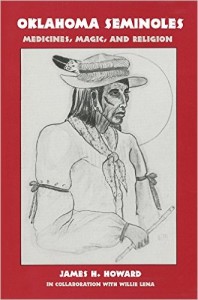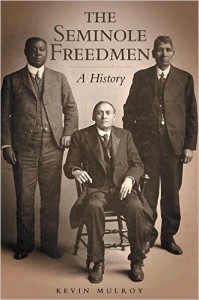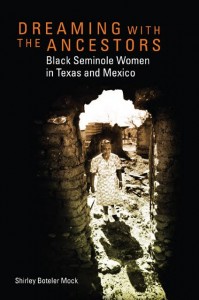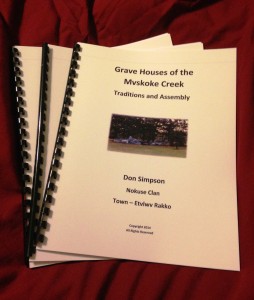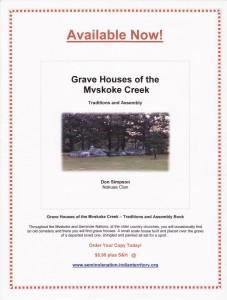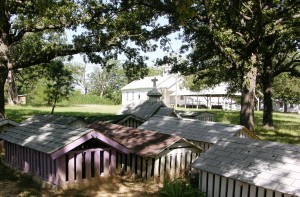The Seminole Burning Case was one of the most sensational of Indian Territory. There was almost a full page in the New York “Herald” of June 18, 1899, describing the crime which instigated the burnings and the trial held before Judge R. Thomas relative to the mob action. A court scene is depicted, along with pictures of Judge Thomas and some of the principals in the case as well as the Muskogee jail. The account was given as follows:
Men who lynched Indians by burning must pay the lawful penalty-conviction of the ringleaders of Oklahoma mob which wreaked vengeance on two young Seminoles suspected of an awful crime creates a sensation in the Indian country.
With the conviction of several members of the mob who in January, 1898, burned two Indians accused of an atrocious crime, lynch law in the Indian Territory and Oklahoma has received a blow which will go far to exterminate it. Fifty-two indictments were found against members of the mob, and only one of the five whose trials have been completed have escaped conviction, although it is hardly likely that the large proportion of convictions will be maintained, as the evidence being presented at the trials now going on is hardly direct as in the first few trials.
The crime for which Lincoln McGeisey and Palmer Sampson, young Seminoles, were burned at the stake, while a howling mob, maddened with liquor, danced around them, was a most revolting one, but whether they were guilty or not, it is not likely will ever be known. What purported their confessions, it is true, were offered in evidence, but if they were confessions, they were wrung from perhaps innocent men after the cruelest torture to which they were put. Time and again they were strung up until the life was nearly choked out of them. Their death was one of the most horrible imaginable. As is in mockery of justice, when the brush had been heaped about them, an man-a minister of the gospel-knelt beside the doomed Indians and prayed with them. As he arose from his knees, the evidence in the recent trial shows, it was he who applied the torch.
Stoically, the Indians went to their death. One of them, it is true, when the pain was unbearable, leaned forward and sucked the flames into his lungs. But the other, like the braves among his ancestors who had silently borne the worst tortures enemies could devise, stood erect until the flames ended his life, a dreadful punishment at the best made still more dreadful by the thought that the victims might have been innocent of the crime laid on them.
Crime An Atrocious One
On the farm of Thomas McGeisey, one of the leading members of the Seminole tribe, lived a young farmer, Julius Leard, a white man. On December 30, 1897, while Leard was away, his wife was attacked by two Indian boys. The children of the Leards saw their mother slain and were the only witnesses to the tragedy. They were unable to identify any of the score or more of Indian boys whom the infuriated whites seized and brought before them.
Shortly before the murder was discovered, a frenzied mob of Oklahomans, under the leadership of Nelson Jones and Sam Pryor known as “Tex” or “Texas Ranger,” scoured the country for miles, and Lincoln McGeisey was the first arrested. Leard’s child said he was not the man who killed his mother, but Jones put him in chains and held him prisoner with John Washington and George Harjo, two other Seminoles, from Sunday until the next Friday night, January 7,1898 when Palmer Sampson was brought in by Pryor and others.
The crime for which Lincoln McGeisey and Palmer Sampson, young Seminoles, were burned at the stake, while a howling mob, maddened with liquor, danced around them, was a most revolting one, but whether they were guilty or not, it is not likely will ever be known. What purported their confessions, it is true, were offered in evidence, but if they were confessions, they were wrung from perhaps innocent men after the cruelest torture to which they were put. Time and again they were strung up until the life was nearly choked out of them. Their death was one of the most horrible imaginable. As is in mockery of justice, when the brush had been heaped about them, an man-a minister of the gospel-knelt beside the doomed Indians and prayed with them. As he arose from his knees, the evidence in the recent trial shows, it was he who applied the torch.
Stoically, the Indians went to their death. One of them, it is true, when the pain was unbearable, leaned forward and sucked the flames into his lungs. But the other, like the braves among his ancestors who had silently borne the worst tortures enemies could devise, stood erect until the flames ended his life, a dreadful punishment at the best made still more dreadful by the thought that the victims might have been innocent of the crime laid on them.
Crime An Atrocious One
On the farm of Thomas McGeisey, one of the leading members of the Seminole tribe, lived a young farmer, Julius Leard, a white man. On December 30, 1897, while Leard was away, his wife was attacked by two Indian boys. The children of the Leards saw their mother slain and were the only witnesses to the tragedy. They were unable to identify any of the score or more of Indian boys whom the infuriated whites seized and brought before them.
Both Indians Tortured
During the week, McGeisey and Washington had been hanged and tortured by the mob in an effort to compel them to confess their guilt or guilty knowledge of the crime. Each of them, although most fiendishly tortured, denied any knowledge of who murdered Mrs. Laird. Sampson was taken to a lonely and secluded place and there hanged and tortured until almost dead.
Whether or not he confessed the crime will probably never be known, but his captors reported that Sampson had confessed to being the murderer of Mrs. Leard, and that he had implicated Lincoln McGeisey.
Immediately, McGeisey and Sampson were loaded with chains, and in compliance with instructions of Deputy Marshall Nelson Jones and on the orders of Pryor, they were forcibly put into a wagon and guarded by a mob of from one hundred to one hundred and twenty-five persons, driven across the line into Oklahoma, where they were chained to a tree and amid the frantic howls of the mob, burned to death.
The Territorial authorities of Oklahoma, while deprecating the lawless deed and deploring the unwarranted and unjustifiable conduct of this large number of its citizens of the Chickasaw country, found themselves thwarted in every effort to apprehend and bring to justice the guilty parties. Finally the United States Courts took the matter up and proceeded with an investigation. The Department of Justice employed Horace Speed of Guthrie, I. T. to assist the United States District Attorney and his assistants, Wilcox and Parker, in collecting the requisite testimony to be brought before the United States Grand Jury.
When the United States Court met at Vinita, I. T., in February, 1899, John R. Thomas, Judge of the United States for the Indian Territory, presided. Indictments were returned against fifty-two men. When the first case was called for trial, the defendants demanded a severance, which under the statute they had a right to do. The former Deputy Marshal, Nelson M. Jones, being the first defendant named in the indictment, was first put upon trial.
It was shown during Jones’ trial that he had recommended torturing the Indians, that he declared there was nothing too bad for the guilty men if they were caught, that he made no attempt to notify the marshal or to overawe(?) the mob, but that he had himself directed the mob to take the suspected Indians across the line into Oklahoma, so as to be out of the jurisdiction of the Indian Territory Courts. On this evidence, Jones was convicted on May 18th.
The conviction of Andrew J. Mathis quickly followed. It was shown that Mathis had knelt and prayed with the Indians just after they were fastened to the stake by chains. It was proved that immediately after praying with them, he had set fire to the brush that was heaped around them.
Not only did the Seminole Burning Case create a sensation nationally, but it was the lead story in every newspaper in both Indian and Oklahoma Territory.
The Congress awarded each of the families of the Seminoles $5,000 or $2,500 for the prosecution of the lynchers.
The trial continued until all 54 persons indicted were tried. As time passed some of the accused were acquitted, and others received lesser sentences.
The trial was changed to Wewoka, September 22, 1899. It was the first United States Court held in the Seminole Nation. An article in the Purcell “Register” stated that “Judge Thomas’ charge covered the usual ground but was uncommonly eloquent and patriotic even for the gifted jurists.”
The commissioner’s report of 1899 concerning indemnity granted indicated that a total of $13,078.75 was awarded, $5,000 for the burning of his son Lincoln McGeisey and $1,113.25 for property that had been destroyed. John Washington was awarded $500 for personal injury and $35 for loss of property. George Harjo was awarded $300 for personal injuries, as was William Thlloco. George Kernell received $100 for personal injuries. Seventeen others received $25 to $50 “for arrest and deprivation of liberty.”
“The Muskogee Times” of April 21, 1905 had an interesting article related to the Seminole Indian Burning Case. It stated that Nelson Jones, the Deputy United States Marshal, who was convicted for participation in connection with the lynching, sent Judge Thomas a cane made of leather inlaid with Masonic emblem.



